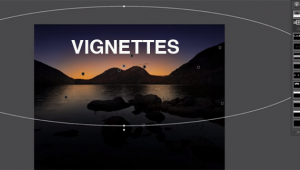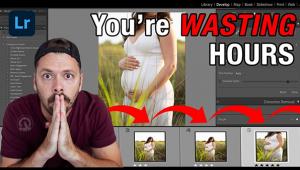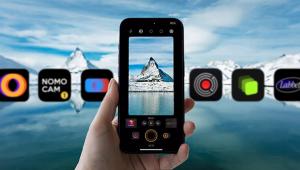Q&A Digital Photography
Security and Longevity of Image File Formats
Q. What are the most popular file formats for digital images? How many people use JPEGs? I use Canon’s Raw format, CR2, converting most to JPEG. I scan images as TIFFs. What is the longevity of these formats? Is there any indication that the JPEG format will be obsolete? There are dozens of other file formats, not including the proprietary Raw formats. How much are they used? Do you have any data about this issue?
Bob Hall
Nantucket, MA
A. I don’t know that any one organization is actually tracking the use of the file format data that is in use. That said, the one research organization that is probably most capable of this is the Pew Research Center (www.pewresearch.com).
Both TIFF and JPEG are agreed to and supported by international standards organizations. All of the Raw file formats and those supported by individual companies like Adobe, Nikon, and Canon could theoretically disappear if the parent company goes away into bankruptcy, for example; however, as long as so many users are involved these formats will survive. The history of each file format, including its original release and subsequent use, can be tracked to some extent by accessing the information stored online by Google and Wikipedia.
Most of the formats like TIFF and JPEG have been in use since before the mid-1980s, and in that 30 some years I have not seen that anyone has lost anything in the changes that have occurred. There are ample means of translating information from one data format to another with an abundant choice of software that can be used for this purpose.
As for the characteristics of each of the primary formats, users need to know that some formats, like JPEG, can reduce the actual information value contained with repeated use, while formats like TIFF preserve all that is saved intact without change. The compressed formats like JPEG are correctly referred to as lossey, with TIFF as not being lossey.
To Upgrade or Not, the Ongoing Question
Q. I’m the old guy who contacted you several years ago about the trouble I was having with SilverFast Version 7 and you agreed with me that it did not work very well. At that time I switched back to Version 6.6.2r5, which I continue to use today. I bought the Plustek 7600i on the strength of your report in the September 2010 issue and have been very pleased with it. Now, I wonder if I should upgrade to Version 8 for my 7600i scanner or go for the 8200i scanner. I am scanning my old trip files for slide shows so I scan quite a few pictures but it is slow going. I have a Dell Studio XPS computer, Plustek 7600i scanner, Photoshop 7, and ProShow Producer for slide shows.
Robert McKenzie
Redding, CA
A. To answer your question I should say that I have not upgraded. I still use a Plustek OpticFilm 7600i and use SilverFast Version 6 to drive it. However, I do understand the new Plustek OpticFilm 8200i with SilverFast 8 offers improved scan performance. But for me that is not enough reason to change as long as what I have functions and provides very satisfying results for me. I acknowledge that companies like Plustek and LaserSoft Imaging are competitively driven to improve their products. But I am old, too, so I am pleased to drive an old car and just have it serviced to keep it running as well as possible. The cost of newness is not worth the expense, and I like my old car.
So I cannot advise or encourage anyone to upgrade just for the sake of keeping up with what is new as long as what you have continues to provide good performance and service. The slow speed of scanners is inherent to what they do and that cannot be changed much with newer upgrades without a cost to scan image quality. Newer in itself is not necessarily better, so maybe wait until the old stuff quits working before feeling any change is necessary.
Interest in Mac Increases as Microsoft No Longer Supports Windows XP
Q. I am a professional photographer, and while I currently use a Windows machine, the recent decision from Microsoft to end support for XP has left me looking at all options. Your support of the Mac mini has me intrigued. Does the quad-core i7 perform any better than the dual-core i5 with Photoshop (with the same amount of RAM)? Since the Mac mini server fits two hard drives, can a second hard drive be added to a regular Mac mini? Would a MacBook (or Air) be acceptable to run Photoshop using a color-corrected external display? What issues should I watch out for if I switch from PC to Mac?
Rob DeCamp
via e-mail
A. The last PC I purchased was an IBM which Lenovo would not support; Lenovo is the Chinese company that bought out IBM’s PC business. I fixed the IBM and eventually gave it to a friend. The reason I changed, having to support both Windows and Mac users, was Apple’s change to Intel main processor chips, which has allowed me to run both the Mac operating system and all versions of Windows on the same machine (although I have not installed Windows 8 and don’t plan to do so).
Since they have been made, I’ve had one of each of the Mac mini computers. The first one was a bit weak for me so I gave it away, but it is still running. All the rest of the models had no difficulty at all running Adobe Photoshop, especially the more recent models, as the maximum amount of RAM is now generous in what can be installed. And that is the crucial component, the mid-level Mac mini has a more than adequate main processor; if maximum RAM is installed then Photoshop will run faster than any normal human can respond to.
The Mac mini with the OS X Server is not recommended as a primary single-use computer. It is just what it is called, a server. So with any Mac mini or for that matter any Mac, hard drive space additions should be external units. From a lot of experience I have found the best source for external hard drives is OWC (www.macsales.com) and they have an external hard drive specifically designed to match the Mac mini.
Although a good number of my readers use MacBook Pro laptops because they take them in the field on location shoots, at home they usually add a desktop pro-graphics 24-inch display like the Dell UltraSharp U2413 or the new Asus PA249Q to obtain wide color gamut reproduction, as laptops are limited to sRGB color gamuts that are only 65 percent of the color range in a digital camera Raw file.
Regardless of whether a Mac or a PC, a wide color gamut display is essential, and you will need a good color management system to adjust, calibrate, and profile the display. Currently for display management I recommend the X-Rite i1Display Pro.
Most of the software used to support digital photography is made in both Mac and Windows versions, except for Corel PaintShop Pro X6, and they all work about the same whether running under Mac or Windows operating systems.
Book Deal
I am pleased to announce the latest 4.3 edition to my eBook Digital Darkroom Resource Cd. The CD now contains 33 chapters totaling 399 pages in Adobe Acrobat .PDF format, providing easy-to-read text and large high-quality illustration. The CD is available for $20 plus $5 shipping and handling (US Mail if available). Ordering is as simple as sending a check or money order for $25 made out to me, David B. Brooks, and mailed to PO Box 2830, Lompoc, CA 93438.


































